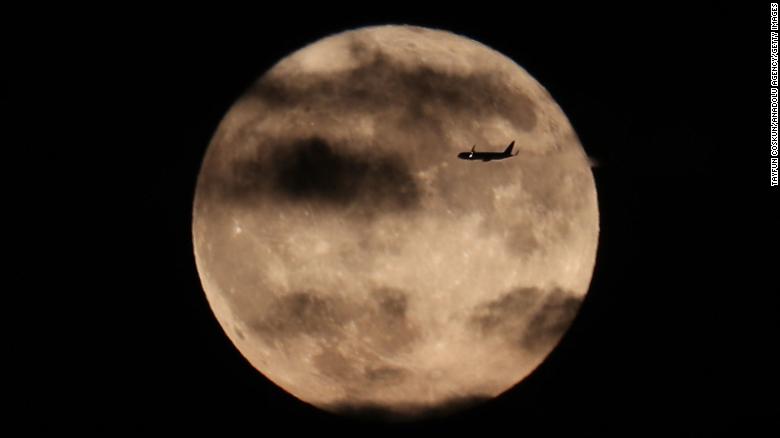Look at the difference between the full moon and the supermoon 0:39
(CNN) -
As fall and colder temperatures approach, there's still a brilliant sight to see: The Harvest Moon makes its debut on September 20, bringing in plenty of bright moonlight.
The full moon known as the harvest moon, as it traditionally gave farmers more time to harvest their summer crops overnight, will appear on Monday night shortly after sunset.
The full moon, which will appear two days before this year's fall equinox, will be visible for the first time at 7:55 p.m. ET, 17 minutes after sunset, according to NASA.
During the few days surrounding the appearance of the harvest moon, the moonrise will last 25 to 30 minutes in the northern United States and only 10 to 20 minutes in northern Canada and Europe, according to NASA.
Typically, the moon appears around sunset and about 50 minutes later each day, according to EarthSky.
But when there is a full moon near an autumnal equinox, such as the harvest moon, the moon rises closer to the time of sunset, creating a phenomenon where there is moonlight from dusk to dawn during several nights in a row.
This year's Harvest Moon will be the last of the summer season for those living in the Northern Hemisphere, while for those in the Southern Hemisphere it will be the fourth winter full moon, according to EarthSky.
advertising
The Harvest Moon can appear larger and brighter than other full moons, and that's because this moon is physically closer to the horizon.
The location of this moon gives the illusion of grandeur, despite not being larger than other full moons.
An airplane passes in front of the harvest moon as it rises behind the Statue of Liberty in New York City, on October 1, 2020.
Another peculiarity of the harvest moon is its color: it can appear especially orange.
This is also due to the fact that the Harvest Moon is closer to the horizon, which creates a greater thickness of Earth's atmosphere creating an orange hue, according to EarthSky.
2021 has been a year of unusual celestial activity, with a rare third full moon, known as the "blue moon," making its appearance in late August.
Normally, it is more common for a season to have three full moons, however this year there will be four in a single season, between the June solstice and the September equinox.
Upcoming events:
In the remainder of 2021, you will be able to see some of these celestial events, depending on your location.
Full moons and their names, according to The Old Farmer's Almanac:
September 20:
Harvest Moon
October 20:
Hunter's
Moon
November 19:
Beaver's
Moon
December 18:
Cold Moon
Meteor showers, according to the EarthSky guide for 2021:
October 8:
Draconids
October
21:
Orionids November
4 and 5:
Southern Taurids
November
11 and 12:
Northern Taurids
November 17:
Leonids December
13 to 14:
Geminids
December 22:
Ursids
Solar and lunar eclipses, according to The Old Farmer's Almanac:
November 19:
A partial lunar eclipse visible to the inhabitants of the US and Hawaii will occur between 1 a.m. and 7:06 a.m. Eastern time.
December 4: There
will be a solar eclipse visible to the inhabitants of the Falkland Islands, the southern tip of Africa, Antarctica and southeastern Australia.
Visible planets
Sky watchers will have multiple opportunities to see planets in our sky on certain mornings and nights throughout 2021, according to The Old Farmer's Almanac planetary guide.
Most of them can be seen with the naked eye, with the exception of distant Neptune, but binoculars or a telescope will provide the best view.
Mercury will shine in the night sky from August 31 to September 21 and from November 29 to December 31.
Venus, our closest neighbor in the solar system, will appear in the western sky at dusk until December 31.
It is the second brightest object in our sky, after the moon.
Mars makes its reddish appearance in the morning sky between November 24 and December 31.
Jupiter, the largest planet in our solar system, is the third brightest object in our sky.
Look for it at night from August 20 to December 31.
Saturn's rings are only visible with a telescope, but the planet can be seen with the naked eye at nights from August 2 to December 31.
Binoculars or a telescope will help you see the greenish glow of Uranus in the morning until November 3 and at night from November 4 to December 31.
Its maximum brightness will occur between August 28 and December 31.
And our farthest neighbor in the solar system, Neptune, will be visible with a telescope during the nights of September 14 to December 31.
Its maximum brightness will occur between July 19 and November 8.
full moon

